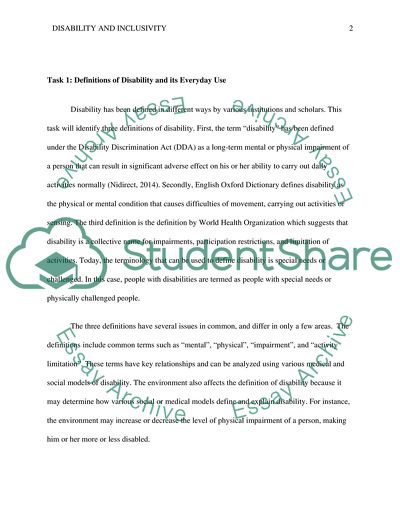Cite this document
(“Disability and Its Everyday Use Dissertation Example | Topics and Well Written Essays - 3000 words”, n.d.)
Disability and Its Everyday Use Dissertation Example | Topics and Well Written Essays - 3000 words. Retrieved from https://studentshare.org/health-sciences-medicine/1855789-disability-and-inclusivity
Disability and Its Everyday Use Dissertation Example | Topics and Well Written Essays - 3000 words. Retrieved from https://studentshare.org/health-sciences-medicine/1855789-disability-and-inclusivity
(Disability and Its Everyday Use Dissertation Example | Topics and Well Written Essays - 3000 Words)
Disability and Its Everyday Use Dissertation Example | Topics and Well Written Essays - 3000 Words. https://studentshare.org/health-sciences-medicine/1855789-disability-and-inclusivity.
Disability and Its Everyday Use Dissertation Example | Topics and Well Written Essays - 3000 Words. https://studentshare.org/health-sciences-medicine/1855789-disability-and-inclusivity.
“Disability and Its Everyday Use Dissertation Example | Topics and Well Written Essays - 3000 Words”, n.d. https://studentshare.org/health-sciences-medicine/1855789-disability-and-inclusivity.


